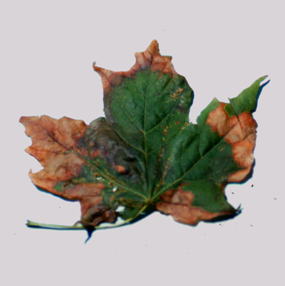 | Anthracnose Hosts: Most trees, commonly ash, maple and oak Pathogens: Gloeosporium spp. as well as other fungi Signs/Symptoms: Blotchy dead areas on leaves For more information see: Anthracnose |
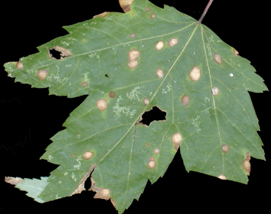 | Purple-Bordered Leaf Spot Host: Amur, Japanese, red, silver and sugar maple Pathogen: Phyllosticta minima Signs/Symptoms: Discrete, circular leaf spots with purple borders For more information see: Purple-bordered leaf spot |
 | Tubakia (Actinopelte) Leaf Spot Hosts: Oak Pathogen: Tubakia spp. (Actinopelte spp.) Signs/Symptoms: Discrete circular, or irregular blotchy dead areas on leaves For more information see: Tubakia leaf spot |
 | Apple Scab Hosts: Apple, crabapple, pear, mountain-ash Pathogen: Venturia inaequalis, V. pirina Signs/Symptoms: Circular, black leaf spots with feathery edges; eventual leaf loss For more information see: Apple scab |
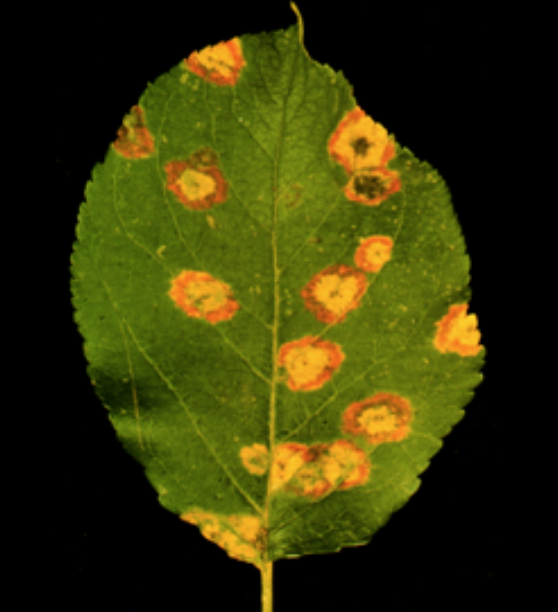 | Gymnosporangium Rusts Hosts: Apple, crabapple, hawthorn Pathogens: Gymnosporangium spp. Signs/Symptoms: Bright yellow-orange, circular leaf spots For more information see: Gymnosporangium rusts |
 | Powdery Mildew Hosts: Most deciduous trees Pathogens: Several genera of powdery mildew fungi Signs/Symptoms: Uniform/blotchy powdery white areas on upper and lower leaf surfaces For more information see: Powdery mildew on trees and shrubs |
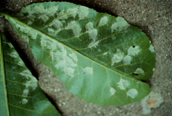 | Downy Leaf Spot Hosts: Hickory, walnut Pathogen: Microstroma juglandis Signs/Symptoms: Discrete powdery white areas on lower leaf surfaces |
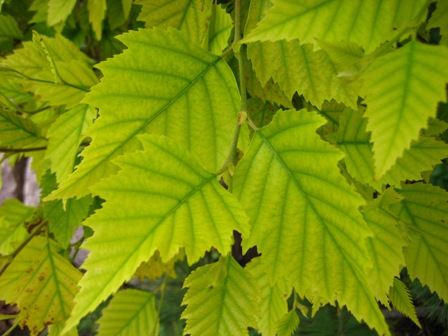 | Chlorosis Hosts: Oak, red maple Cause: Iron or manganese deficiency, often induced by high soil pH Signs/Symptoms: Yellow leaves with dark green veins For more information see: Chlorosis |
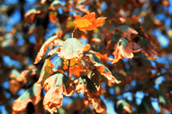 | Scorch Hosts: Most deciduous trees Cause: Water stress induced by drought, high soil salt content, or other water-limiting factors Signs/Symptoms: Dead tissue on leaf margins |
 | Tatters Hosts: Most deciduous trees, but commonly oak Cause: Possible early season cold injury Signs/Symptoms: Lacy, tattered-looking leaves For more information see: Tatters |
For more information on deciduous tree leaf diseases:
See https://pddc.wisc.edu/ or contact the University of Wisconsin Plant Disease Diagnostics Clinic (PDDC) at (608) 262-2863 or pddc@wisc.edu.
Authors: Brian Hudelson, UW-Madison Plant Pathology
Last Revised: 02/29/2024
D-number: D0041
Thanks to Jane Anklam, Mark Kopecky and Judy Reith – Rozelle for reviewing this document.
A complete inventory of UW Plant Disease Facts is available at the University of Wisconsin-Madison Plant Disease Diagnostics Clinic website: https://pddc.wisc.edu.
Send a Plant Sample for Analysis
Be cautious when self-diagnosing plant health issues. Very few diseases can accurately be diagnosed by eye.
Contact the UW Plant Disease Diagnostics Clinic (PDDC), and for a small fee, clinic staff can examine a plant, determine the cause of the disease/disorder, and provide advice on how to control or prevent the issue.
Download Article





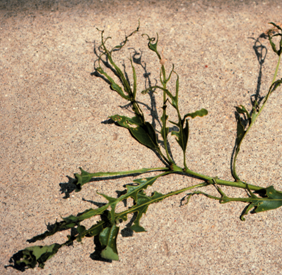 Tatters
Tatters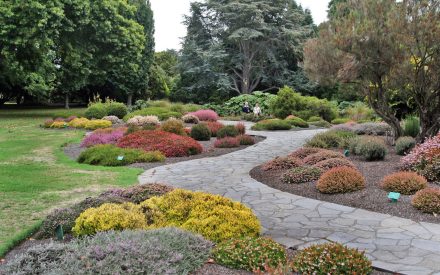 Choosing the Right Landscape Plants: Factors to Consider
Choosing the Right Landscape Plants: Factors to Consider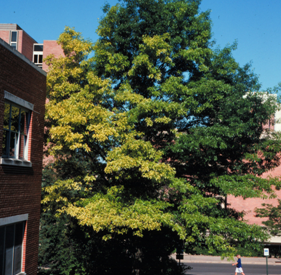 Chlorosis
Chlorosis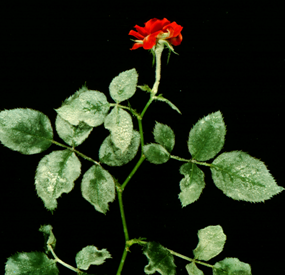 Powdery Mildew - Trees and Shrubs
Powdery Mildew - Trees and Shrubs


